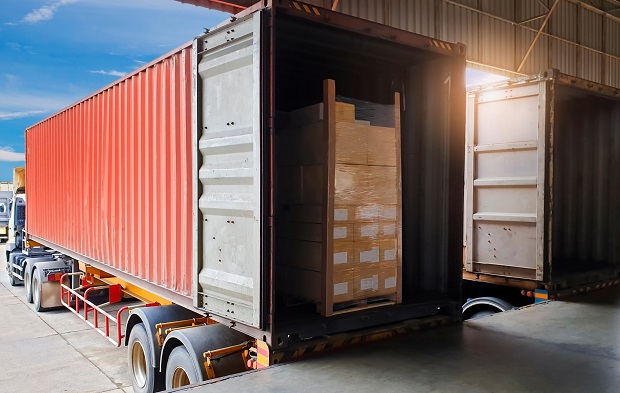Transferring heavy equipment to a different place is a crucial process. Without ensuring proper handling, the people involved in this vital activity might face life-threatening accidents. Therefore, substantial planning is essential in effectively reducing the risks associated with moving these supplies.
 With proper heavy equipment transportation management, companies can adequately secure these expensive and valuable organizational tools during transit. On the other hand, failing to ensure the effectiveness of this activity might result in a vehicle violation with costly fines that would affect the business’s budget. As a result, these conditions might threaten the company’s reputation while losing expensive technological tools that are valuable in their operations.
With proper heavy equipment transportation management, companies can adequately secure these expensive and valuable organizational tools during transit. On the other hand, failing to ensure the effectiveness of this activity might result in a vehicle violation with costly fines that would affect the business’s budget. As a result, these conditions might threaten the company’s reputation while losing expensive technological tools that are valuable in their operations.
 To reduce these consequences, organizational leaders must consider following four best practices for shipping heavy equipment.
To reduce these consequences, organizational leaders must consider following four best practices for shipping heavy equipment.
- Prepare Heavy Equipment For Shipment
The equipment’s manual offers specific instructions to prepare heavy items for transportation effectively. This valuable document contains information about particular components that need to be tied down, steps in securing moving parts, and measurements that might be useful in ensuring the success of the shipping process. In addition, it notifies you whether the battery or alarm has to be disconnected to eliminate risks of leaks or massive explosions.
After reading the heavy equipment instruction manual, you have to inspect the capabilities of these devices before loading them onto a to-be-shipped trailer. Since hauling something too serious might damage the trailer and the entire vehicle, measuring whether they can pull the weight is vital to reducing car accidents. In addition, you must frequently assess the trailer’s tire pressure since there’s a specific ratio you have to implement and check the efficiency of the brakes to ensure they’ll work throughout the transportation period.
- Leverage Appropriate Securing Devices
To ensure the safety of heavy equipment transportation, organizations must secure this heavy haul to prevent it from blowing, tipping, falling, and rolling off the moving vehicle. These tools shouldn’t shift in a way that might affect the trailer’s stability, which can create severe road accidents. Thus, they have to leverage appropriate securing devices that can successfully hold the heavy equipment together while in transit to ensure the safety of the haulers.
As you develop an accident-proof tactic, some of the devices you should include are durable chains and equipment identification numbers. However, you should ensure the chains are thick enough and case-hardened to guard against possible cutting since driving off with a heavy load is more challenging. In addition, you must check the tie-downs to see if they’re securely pulled tight and don’t have vulnerable sections or any damage that might break during transportation inside the shipping container.
- Verify Driver Visibility
Most organizational leaders efficiently hire professional drivers that meet their required criteria and experience levels. Likewise, these experts also look for companies that can offer them safe driving opportunities so they can deliver their products safely to their distributors and end users. However, if companies don’t improve the visibility of these valuable employees, they might drive their supplies at night and cause severe risks of not being able to perceive distances accurately.
After the machine is safely loaded and secured inside the moving vehicle, you must validate that the equipment and its protection system won’t interfere with the driver’s view of the road. With that, you must examine if the placement of the device allows free movement for the driver and won’t obstruct them from getting out of the vehicle or accessing container accessories. This driver visibility verification process ensures that the driver can safely transfer the equipment while helping your company comply with various transportation requirements.
- Determine Shipping Methods
There are three most common ways to successfully ship heavy equipment: container shipping, lift-on or lift-off (LoLo), and roll-on or roll-off (RoRo) shipping. The specific transport methods you select will rely on how you want your equipment to arrive and whether it demands customized shipping to accommodate its irregular size. Since the transportation process is critical for the safety of the employees on board and tools in transit, you must choose the best one that meets the demands of your devices.
First, container shipping is a transportation model that packs equipment in large standardized containers for effective handling and shipping. On the other hand, the LoLo method loads and unloads containerized cargo using cranes, accommodating larger container capacity and enabling more outstanding cargo transportation. Alternatively, the RoRo option drives vehicles directly onto a ship, and these automobiles must be loaded onto trains or lorries to reach the departure port, arrival port, and final destination.
Key Takeaway
As a business owner, you must ensure that all your expensive supplies are carried adequately from one place to their specific destinations to avoid damage. You should consider following these four practices for shipping heavy equipment. Once you do so, you ensure that you can prevent life-threatening road accidents from happening while securing both your heavy equipment and employees’ safety.




Comments are closed.